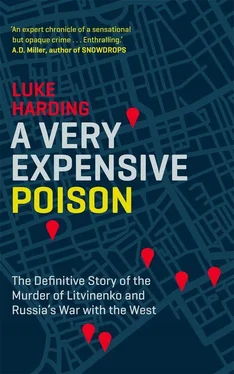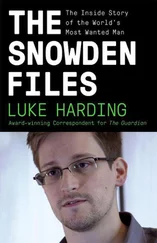The name was in tribute to Curie’s lost homeland, Poland, which hadn’t existed as an independent state since the late eighteenth century. Three imperial powers – Russia, Prussia and Habsburg Hungary – had partitioned it into non-existence. Curie’s family actively supported Polish nationalist movements; her father, a mathematics and physics teacher, was sacked from his job for pro-Polish sentiments. It would take two decades, strikes and street battles in Warsaw and Lodz in 1905, plus a world war, before Poland was reconstituted in 1918 as a sovereign territory.
Polonium was so rare it was impossible to make in any quantity. There were 100 microgrammes of polonium per ton of uranium ore. In the 1930s scientists found that under the right conditions they could manufacture polonium in a nuclear reactor. The technique involved irradiating another element, bismuth or Bi, by bombarding it with neutrons. (Specifically, Bi-209 absorbs a neutron and becomes Bi-210. It then beta-decays to Polonium-210, or Po-210.)
An isotope is a particular version of an element, depending on the number of neutrons. This resulting isotope was strange. Po-210 emits extraordinarily high levels of alpha particles, one of three types of radiation. A single gram produces 140 watts of energy, an enormous amount. Polonium is a source of much weaker gamma radiation. The element has a half-life of 138 days, which means that over this period half of the material will decay.
The right equipment can detect tiny quantities of polonium, so intense is its emission of alpha particles. It’s possible to detect amounts as small as a few picograms, one millionth of a millionth of a gram.
In the century since the Curies’ discovery, polonium never found much of a foothold in the real world. Nuclear states including the US, USSR, UK and France used polonium as a trigger for the first generation of nuclear bombs; it had a niche role in the Soviet space programme. In 1970, Moscow sent Lunokhod 1 – an ingenious space rover that looked like a giant bathtub on wheels – to the moon. (It’s still there.) During the lunar nights, Po-210 kept its components warm.
By the 1970s, polonium was more or less obsolete. Weapons scientists replaced it as a trigger with a more efficient tritium ‘gun’. State-run nuclear laboratories in the US, UK and Canada stopped making polonium. (In the 1950s and 1960s Britain produced it at civilian nuclear sites. According to the defence ministry in London, any surviving stocks would have completely decayed to Pb-206 – lead – by the early 1980s.) China abandoned polonium in the 1990s.
The only country that continued to produce it was the Russian Federation. The Avangard facility exported Po-210 on a commercial basis, for use in anti-static devices. The amounts involved were extremely small.
By the time Lugovoi and Kovtun came to kill Litvinenko in London in 2006, polonium was something of a forgotten chemical oddity. It was present on the periodic table, hanging in dusty chemistry classrooms, atomic number 84, found between bismuth and astatine, marked with a hazard sign.
* * *
Faced with what looked like a mini-nuclear bomb, a case with obvious political and diplomatic implications, and an international media frenzy, the British government sought expert advice on polonium. Where had it come from? Was it possible to buy polonium on the open market? How much would it cost? Did the UK have its own stockpiles? Could criminal gangs be involved? And just how dangerous was it?
One knowledgeable source was Norman Dombey, an emeritus professor of theoretical physics at the University of Sussex, set on a pleasant campus above the seaside town of Brighton. Dombey had published about a hundred scientific papers and was an authority on the nuclear weapons programmes of the UK, US and former Soviet Union. He also knew Russian. In 1962–3 he spent a year at Moscow state university on one of the first academic exchanges with the USSR, when he visited Soviet scientific institutions. He went back to Moscow in 1988 during Glasnost. He invited the nuclear scientist turned dissident Sakharov – by this point recalled by Mikhail Gorbachev from internal exile in Gorky – to the UK to collect an honorary degree. In 1992, Dombey visited the St Petersburg Nuclear Physics Institute. Subsequently he toured other physics institutions in Russia, as well as Armenia and Georgia, where professional scientific life had collapsed.
White-haired, approachable, lucid, modest, Dombey displayed a credibility that was enhanced by the fact that he was one of very few who predicted that Saddam Hussein didn’t have weapons of mass destruction. In September 2002, in the run-up to the Iraq war, he wrote an article entitled ‘Saddam’s Nuclear Incapability’. His thesis – there was no nuclear threat from Baghdad – contradicted the apocalyptic assessments coming from the Bush–Cheney administration in Washington, as well as from its ally in London, Tony Blair. Dombey, as history shows, was right.
The professor’s report on polonium – originally commissioned by Marina Litvinenko – was disturbing. The only comfort for investigators was that polonium was so intensively radioactive it was easy to track. The trail of those who brought it to London could be ‘easily established’, he believed.
The bad news was that what investigators were dealing with was an extremely hazardous substance – dangerous to handle in even milligram or microgram amounts, and requiring special equipment and strict control. Weight for weight, polonium was 2.5 x 10 to the 11 times as toxic as hydrocyanic acid.
Dombey’s suspicion was that the polonium had come from Russia. He also realised Litvinenko’s murder was not meant to be discovered. One version was that the use of polonium was showy: it sent a chilling message to Berezovsky and other émigré critics of the Russian regime. The other: that the isotope was the perfect undetectable weapon. Dombey inclined strongly to this second view. ‘It was meant to be a mysterious poisoning. That was because polonium was an alpha emitter which Geiger counters didn’t pick up,’ he said.
To be certain of the polonium’s origin, the professor had to make further inquiries. He wrote to senior nuclear officials in Moscow, the US, Canada and France. As he suspected, all countries other than Russia had ceased the manufacture of polonium. The only surviving polonium line was at Avangard in Sarov. Its director, Radii Ilykaev, confirmed the plant was exporting 0.8 grammes of polonium to the US a month, on a contractual basis.
Logically, there were only three ways of making polonium, Dombey reported. The first was to extract it from uranium ore, as the Curies did. The second was to irradiate a small sample of Bi-09 in a research reactor suitable for preparing isotopes. The third was to irradiate a large quantity of Bi-209 in a powerful high-flux reactor.
In his meeting with Lugovoi and Kovtun, Litvinenko drank 26.5 micrograms of polonium, it was established – or 4.4 gigabecquerels (GBq). This was an infinitesimally small amount, less than a grain of sand. A report by three radiation experts – John Harrison, Dr Nick Gent and Stuart Black – estimated that Litvinenko absorbed about 10 per cent of this dose – 0.44 gigabecquerels – into his bloodstream. It was more than enough to kill him
The actual amount put in the teapot, though, was larger – at least 50 micrograms, and probably 100 micrograms, including the undrunk tea left in Litvinenko’s cup and the remaining tea in the teapot.
It would be impossible to extract this amount of polonium from natural uranium ore, Dombey calculated. Nor could it be prised out of commercial supplies sent to America. You would need to buy or steal 450 anti-static devices containing polonium without anyone noticing. Moreover, the tiny amount of polonium inside was impossible to extract unless, as Dombey put it drily, those performing the extraction ‘wished to commit suicide’.
Читать дальше












